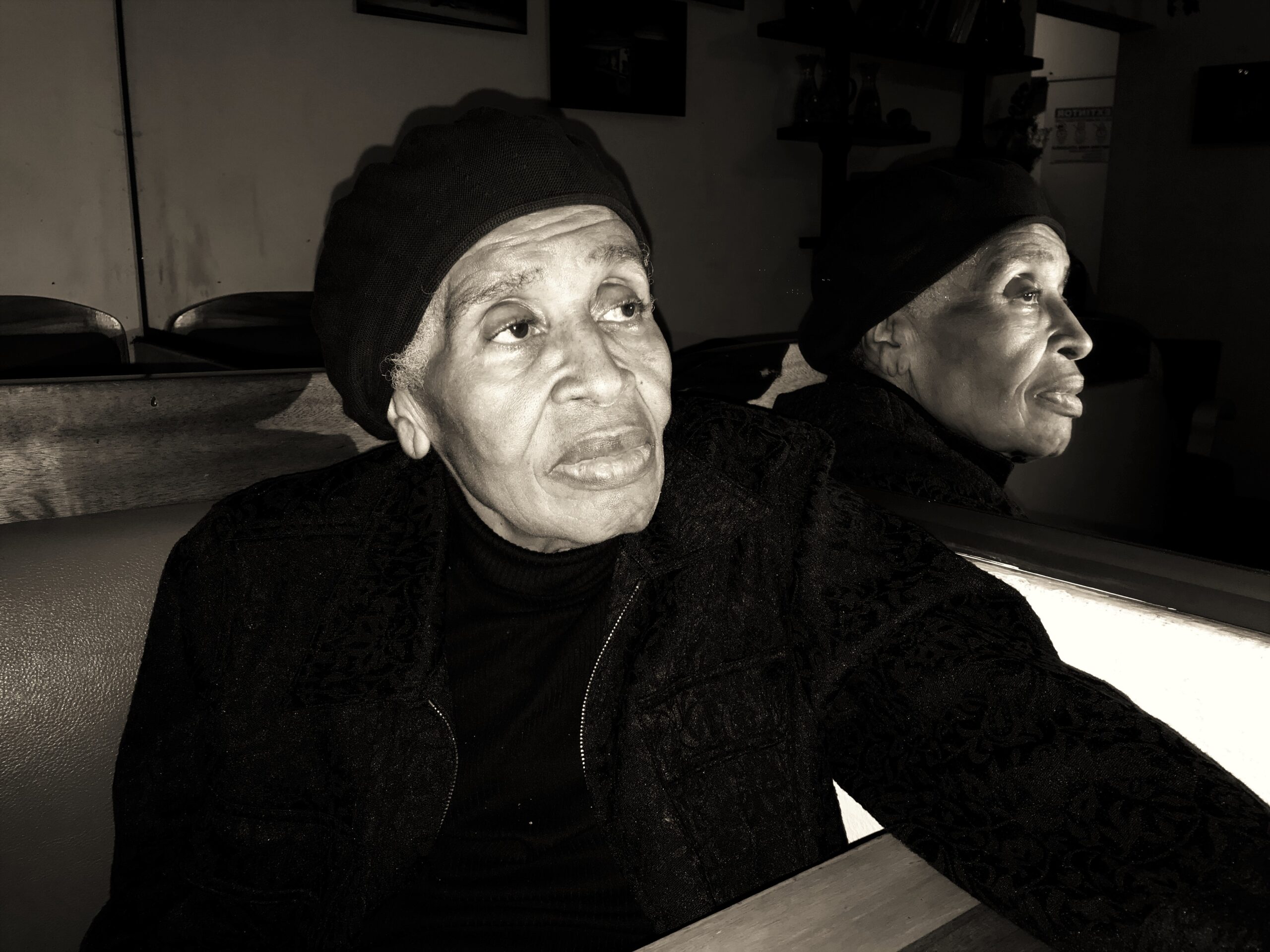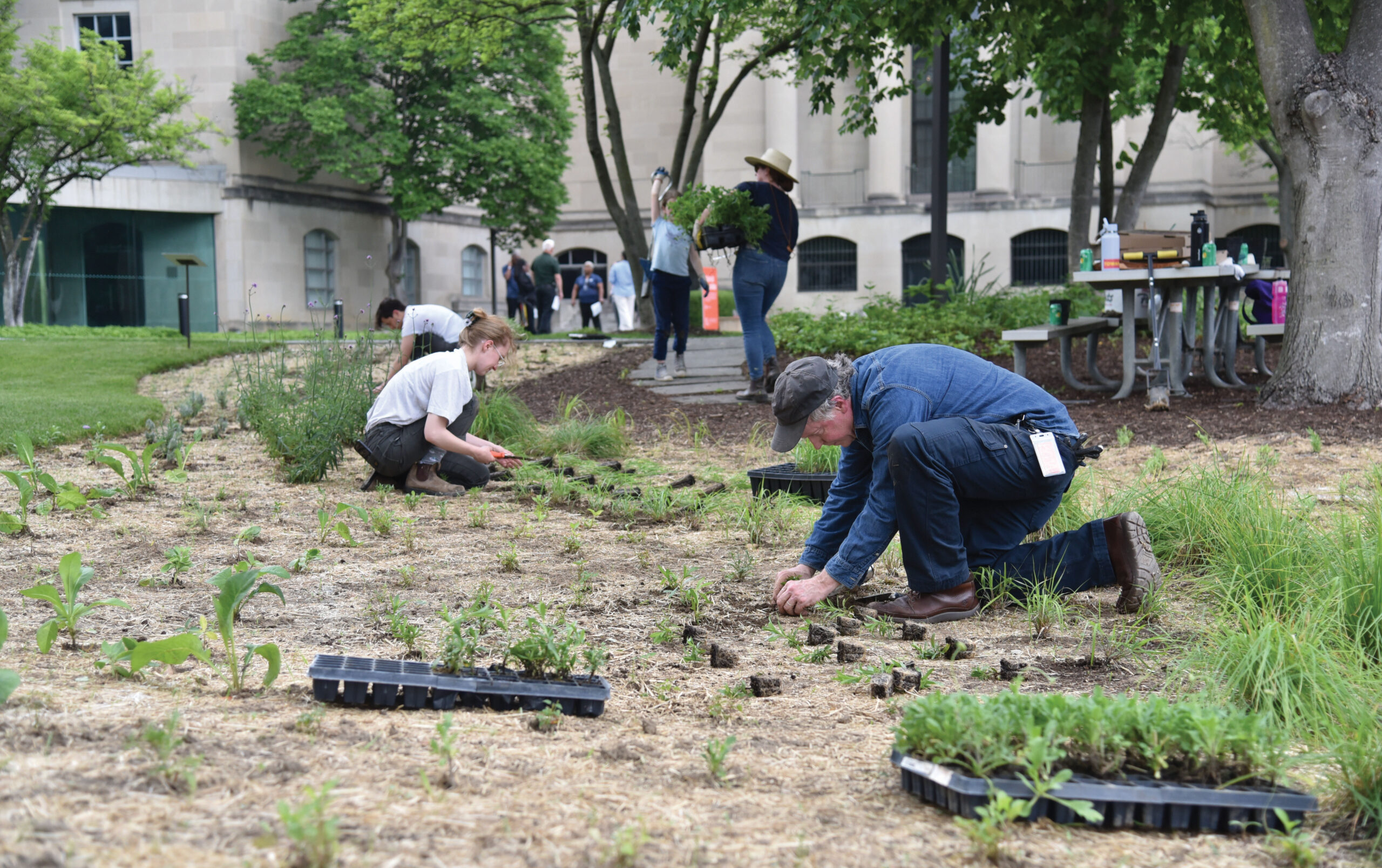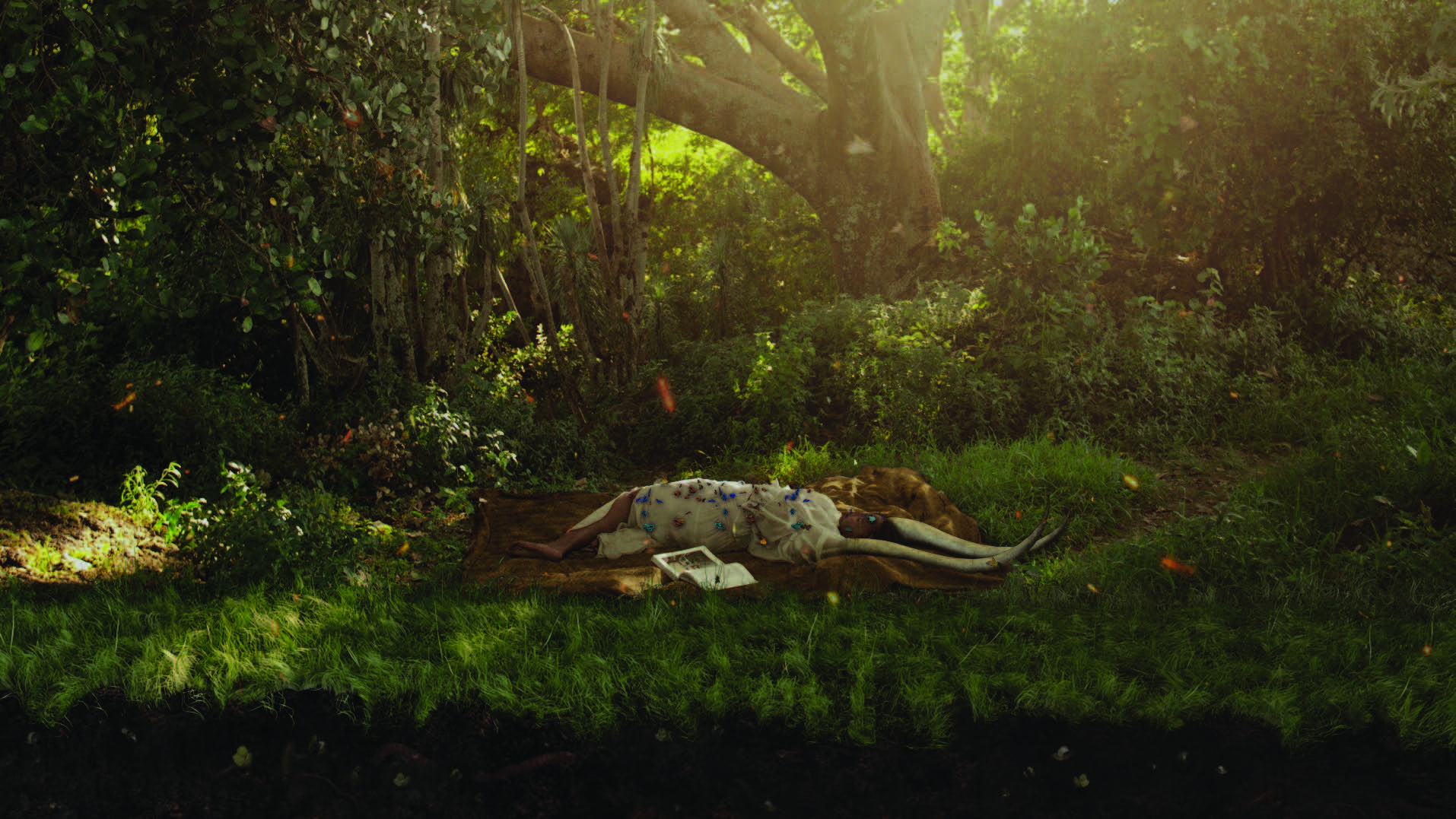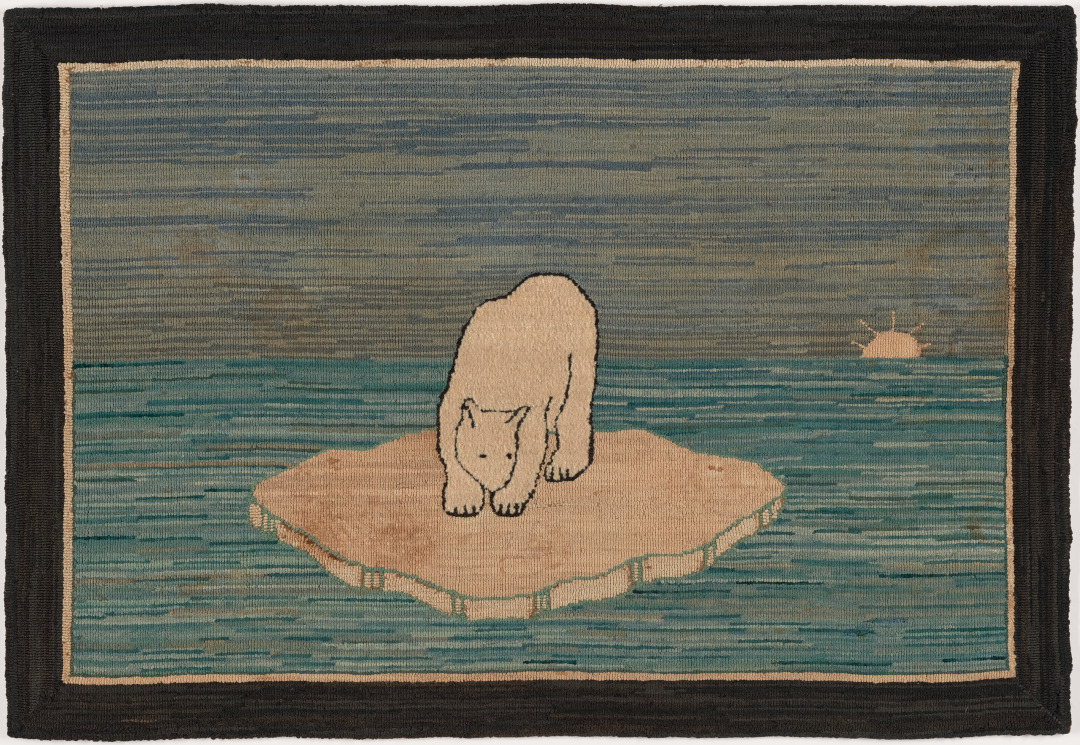
by Chloe Rybacki
With carefully tufted white fur outlined in black, this woolen polar bear on an ice floe occupies center stage in a woven Arctic seascape. Surrounding the bear, dense rows of multicolored fabric blend to form parallel backdrops of sea and sky, their subtle colors accentuated by the rug’s wide dark border.
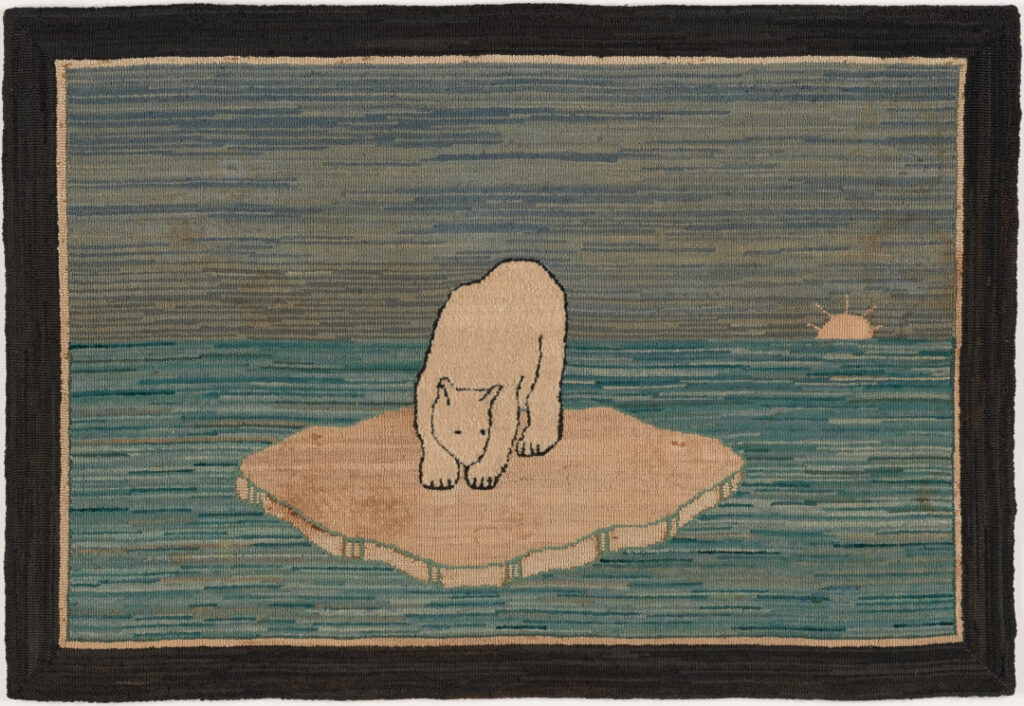
This hooked mat, featuring a polar bear floating on ice, was made by a woman living in a fishing village on the coast of Newfoundland and Labrador, Canada. Pre-made designs, along with kits of materials, were issued to women living in fishing communities across Newfoundland and Labrador. These women worked in their own homes, carefully hooking strands of silk or rayon through the burlap that served as the base for a rug. In turn, these vibrantly colored rugs were sent out to urban consumers in Canada, Britain, and New England. “Bear on ice floe” is one of the most common designs found on Grenfell mats.
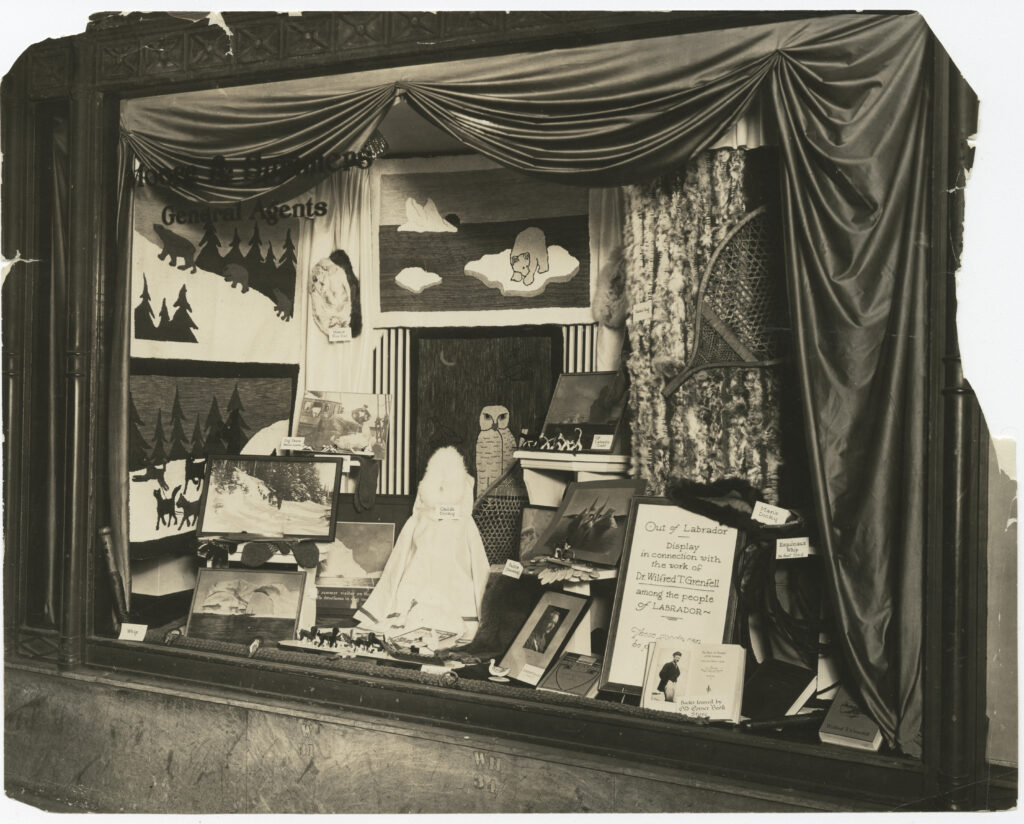
Continental Philanthropy
Grenfell rugs were created as part of the Grenfell Mission, an organization started in 1892 by Sir Wilfred Grenfell (1865–1940) to provide medical resources to settler fishing communities in Newfoundland and Labrador. Grenfell’s work was rooted in a wider trend of Christian social reform, whose participants saw themselves uniquely suited to uplift impoverished communities. The Mission soon concerned itself with a broader social transformation of the region—embarking on “medical, educational, industrial and agricultural” projects.1
Around 1909, looking for a product that the fishing communities could sell, one of Grenfell’s volunteer staff seized upon an existing mat-hooking tradition, a practice that can be traced to the fishers’ British, Irish, and Scottish origins. The Grenfell “Industrial” Department established a rug-making cottage industry, which provided work to women during winter. Their rugs were then sold to raise funds for the larger Mission.
Because of the standardization of designs and broad distribution of the rugs, it is rare to come across a rug that has a known origin or creator. Although this BMA rug cannot tell us the specifics about who made it, it can, as an object, tell us a broader story about the circumstances of its creation.
Illusion of the North
To appeal to urban consumers, the Mission leaned into associations of handicraft and the wilderness. Grenfell rugs mainly depicted scenes of Arctic animals and landscapes—like the bear pictured in the BMA rug.
This design choice, then, reflects a larger marketing strategy of the Grenfell rugs—a specific and often contradictory image of “the North,” one reliant on impressions of a remote landscape undisrupted by colonization rather than a space already long affected by the presence of settlers and missionaries. Many mats featured Indigenous people in snow-filled scenes, their designs described in such generic language as “Inuit and Penguins.” Such images were a “disproportionately large” part of marketing materials, despite not reflecting who was making or benefiting from the sale of hooked mats.2 Internally, the Mission took great pains to emphasize that Mission volunteers would be working with “people [who were] of British extraction and English-speaking,” rather than the Indigenous Inuit and Innu populations,3 but the designs were marketed to urban audiences who were hungry for apparent authenticity in the face of increasing industrialization.
From Silk to Snow
The rise and fall of the popularity of Grenfell rugs can be tied to the emergence of the first synthetic fibers: rayon and nylon. The Grenfell Mission opened stores in the heart of large cities like New York and Boston, where metropolitan women flocked to buy the rugs that represented a distant locale. This urban audience was encouraged to donate their silk or rayon stockings as raw material for the rugs. Consumers were urged, “When your stockings run, let them run to Labrador!”4 With this exchange, they completed a manufacturing network that saw items and raw materials traveling back and forth between the United States and Canada.
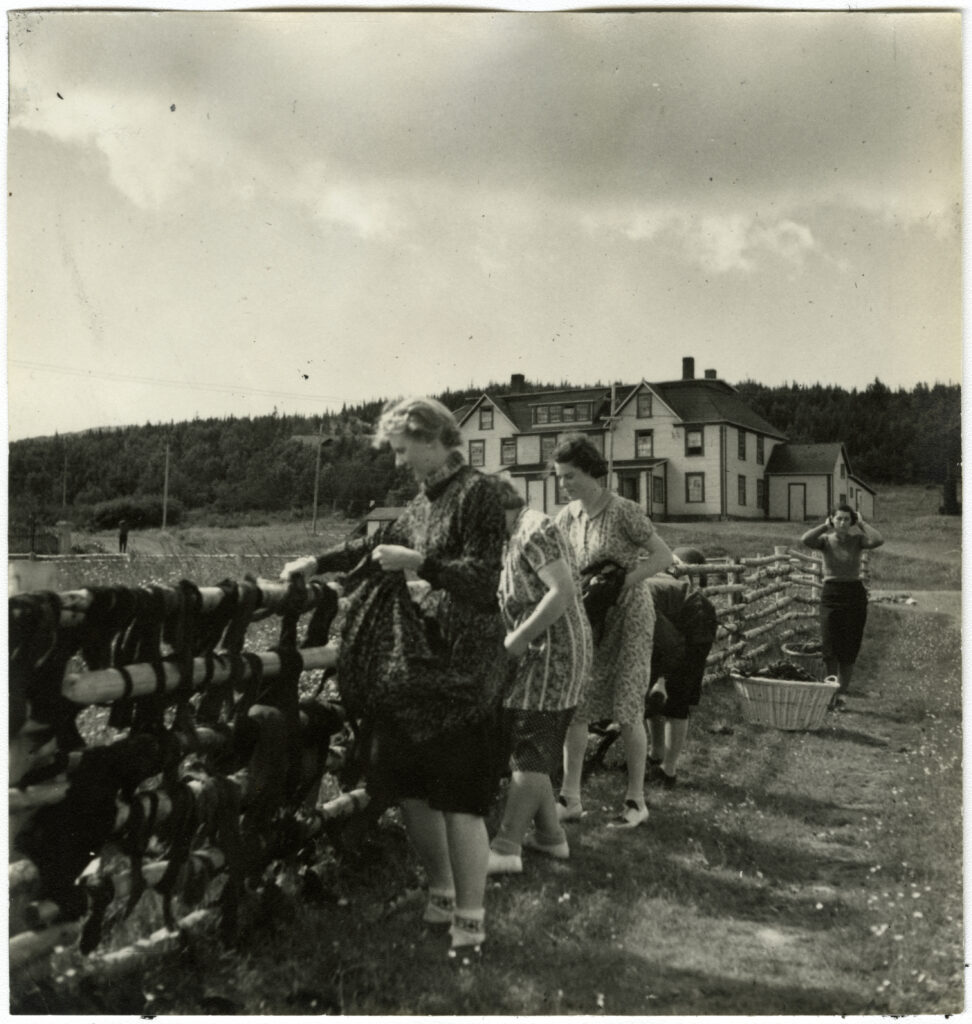
Supply-chain difficulties eventually became a burden for the organization in the 1940s. When nylon was invented in 1938, once-common silk and rayon stockings were discarded. Soon, the Mission no longer had material for the rugs, as nylon was unsuitable for mat hooking. Although the company exists today in the form of Grenfell Handicrafts, the rugs never again reached the popularity they enjoyed in the 1930s.
The same plastic fiber that has environmental consequences today had enacted another kind of destruction on the “ice-capped” Grenfell rugs.
Lessons from the Grenfell Rugs
Given the harsh living conditions in Newfoundland and Labrador, Grenfell Industrial did offer a substantial way to support a household. The Mission also tended to dramatize in order to gain publicity, and the stories it told consumers often reinforced their own notions of civilization and approaches to the land. At the time, this narrative was demonstrated through the belief that the Mission directors were better equipped than the local community to direct the production, designs, and marketing of the mats.
This polar bear rug paints a wondrous scene of the Arctic world that in many ways obscures the human influences within it. To understand this mat requires reading between the subtle bands of color, to examine the connections that exist between the planet, the land, and the people on it. The polar bear on its ice floe is indeed an image of nature—but a nature that was woven into existence.
Chloe Rybacki was the 2024 Metcalf Decorative Arts Intern at the Baltimore Museum of Art and is currently an undergraduate student at the University of Chicago.
- Harry L. Paddon, “Ye Goode Olde Dayes,” Among the Deep Sea Fishers 27, no. 4 (January 1930): 157, https://collections.mun.ca/digital/collection/hs_fisher/id/4698/rec/9. ↩︎
- Andrea H. Procter, A Long Journey: Residential Schools in Labrador and Newfoundland, Social and Economic Studies 86 (ISER Books, 2020), 33. ↩︎
- Jennifer J. Connor and Katherine Side, The Grenfell Medical Mission, McGill-Queen’s/Associated Medical Services Studies in the History of Medicine, Health, and Society 49 (McGill-Queen’s University Press, 2019), 55. ↩︎
- Paula Laverty, Silk Stocking Mats: Hooked Mats of the Grenfell Mission (McGill-Queen’s University Press, 2005). ↩︎


